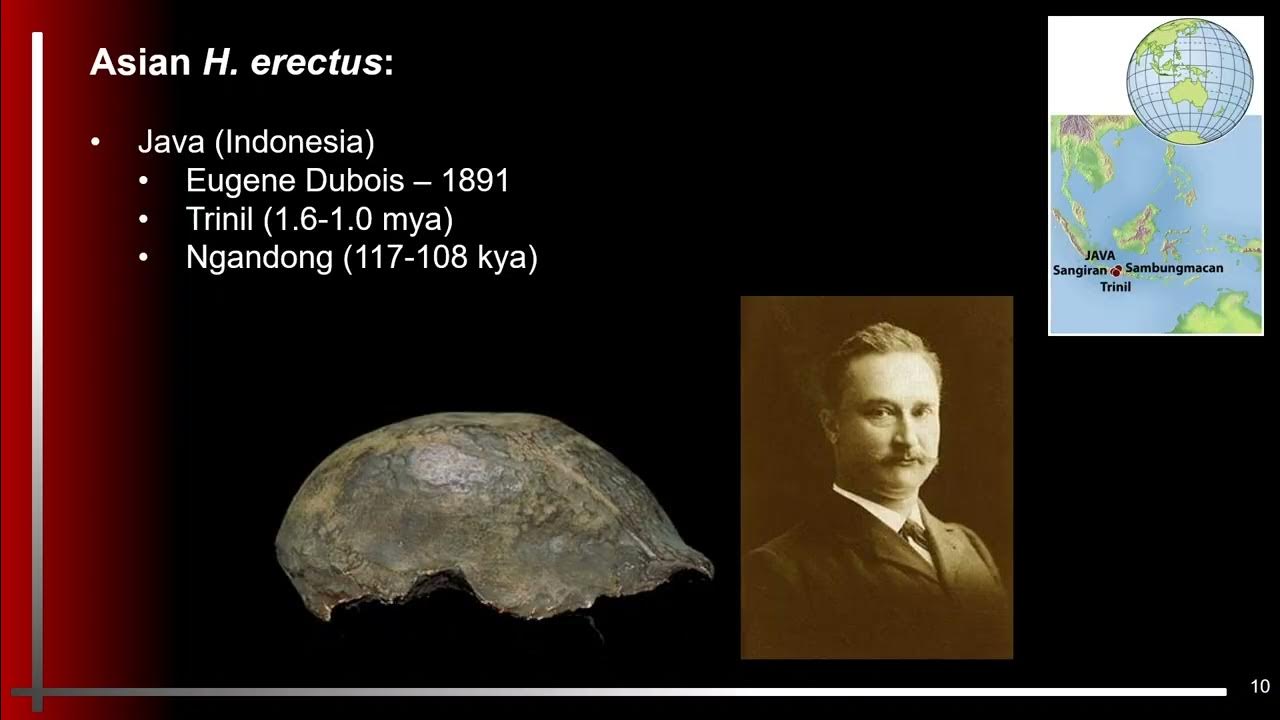1. Introduzione all'antropologia economica
Summary
TLDROver the last 50,000 years, humanity has adapted to diverse environments and climates, developing distinct ways of life. Central to these adaptations is human labor, which has allowed people to transform nature to meet their needs. This process involves physical energy, the ability to manipulate raw materials, observation, creativity, and the development of language and tools. Human society is organized around work and social relationships, which shape power dynamics and wealth distribution. In agricultural societies, physical strength has historically favored men, but with industrialization, gender inequalities have lessened.
Takeaways
- 😀 Human beings have adapted to diverse environments and climates over the last 50,000 years, spreading across the globe.
- 😀 Humanity has developed different ways of living by adapting to various environments, each shaped by the processes of evolution and survival.
- 😀 The core of human history is the work and labor that has allowed humans to transform nature to meet their needs.
- 😀 Human work is a synthesis of physical energy, the ability to manipulate raw materials, observation skills, and creativity to solve new problems.
- 😀 These capabilities arise from the complexity of the human brain, the language that allows for conceptualizing space and time, and communication with others.
- 😀 The dexterity of human hands enables forceful and precise gripping, further enhancing our ability to manipulate the environment.
- 😀 Humans are social beings who live in communities, which allow them to coordinate efforts and increase productivity.
- 😀 The organization of work is the foundation of human relationships, influencing the balance of power, wealth, and societal structures.
- 😀 In traditional agrarian societies, physical strength was crucial, often leading to gender inequalities where men were valued more than women.
- 😀 With the rise of factories, where physical strength became less important, gender inequalities began to reduce, marking a shift in societal structures.
Q & A
How has humanity adapted to different environments over the past 50,000 years?
-Humanity has adapted to diverse environments and climates by spreading across the world, developing various forms of adaptation to meet the needs of different ecosystems. This process has been influenced by human labor and the ability to manipulate nature to address specific challenges.
What role does human labor play in the adaptation to different environments?
-Human labor is central to adaptation as it involves transforming nature to fulfill human needs. It combines physical energy, material manipulation, construction skills, observation, and creativity, enabling humans to adjust to a wide range of environments.
How does the complexity of the human brain contribute to our ability to adapt?
-The complexity of the human brain, along with the ability to use language, plays a significant role in adaptation. Language allows humans to conceptualize space and time, communicate effectively, and share knowledge, which aids in problem-solving and innovation.
What is the significance of human dexterity in adaptation?
-Human dexterity, especially in the hands, allows for precise and strong manipulation of tools and materials. This physical capability enhances humans' ability to work and build solutions to problems, contributing to their adaptability in various environments.
Why are humans considered social beings, and how does this impact their adaptation?
-Humans are social beings because they live in communities, which enables coordination of efforts. This social structure allows people to pool their labor, multiply their capabilities, and create more suitable environments for their survival and progress.
How does the organization of labor influence human relationships and power dynamics?
-The organization of labor shapes human relationships by determining the distribution of work and resources. This leads to the development of power dynamics and wealth inequality, where certain groups hold more power or resources than others, based on their role in the labor structure.
What role did physical labor play in gender dynamics in agrarian societies?
-In agrarian societies, physical strength was crucial for agricultural work, which led to gender inequalities favoring men, who were typically better suited for physically demanding tasks.
How did the industrial revolution impact gender inequalities?
-With the advent of factories, where physical strength became less important, gender inequalities began to reduce. The shift to industrial work allowed for more diverse roles, with women having greater opportunities in the workforce.
What is the relationship between labor, social relations, and wealth distribution?
-Labor, as organized within societies, directly influences social relations by shaping roles and responsibilities. These roles determine the distribution of power and wealth, creating systems of inequality and influence over resources.
How does human creativity contribute to solving problems in different environments?
-Human creativity plays a critical role in problem-solving, enabling individuals and societies to imagine and build innovative solutions to challenges posed by different environments. It is an essential aspect of adapting to and overcoming obstacles in the world.
Outlines

Этот раздел доступен только подписчикам платных тарифов. Пожалуйста, перейдите на платный тариф для доступа.
Перейти на платный тарифMindmap

Этот раздел доступен только подписчикам платных тарифов. Пожалуйста, перейдите на платный тариф для доступа.
Перейти на платный тарифKeywords

Этот раздел доступен только подписчикам платных тарифов. Пожалуйста, перейдите на платный тариф для доступа.
Перейти на платный тарифHighlights

Этот раздел доступен только подписчикам платных тарифов. Пожалуйста, перейдите на платный тариф для доступа.
Перейти на платный тарифTranscripts

Этот раздел доступен только подписчикам платных тарифов. Пожалуйста, перейдите на платный тариф для доступа.
Перейти на платный тариф5.0 / 5 (0 votes)






